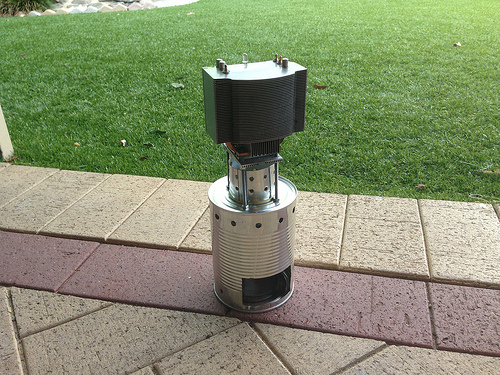The bicycle is a great invention. It is an extremely efficient method of transportation, even more so than walking. So why not harness that efficiency for other things? [Tony] had that same thought so he ordered a bike generator but after waiting too long for the company to send it, he decided to make his own.
[Tony] is an bicycle enthusiast so he had an old bike and an old training stand he could use for the project. Generating electricity from pedaling the bike requires some sort of generator. Lucky for him, [Tony] happened to have a cordless drill that stopped going in reverse. Since he had since upgraded, this was the perfect candidate for the generator. The drill was mounted to the training stand so that a pulley inserted in the chuck pressed against the rear wheel. Wires were added to connect the drill’s battery connectors to a 12vdc to 120vac inverter. As the bike is pedaled, the rear wheel spins the drill, which spins the drill motor creating DC voltage. That DC voltage is then converted to AC by the inverter. With a multimeter connected to the output from the drill, it is easy to adjust the pedaling speed to keep the output in the 11-14v range which is required by the inverter.
In the photo above, you can see a light bulb being powered by the bike. However, the bike powered generator could not power the larger load of a computer. The remedy for this was to purchase a solar charge controller and a 12 volt battery. The bike charges the battery and the battery can power the computer through the inverter.

















